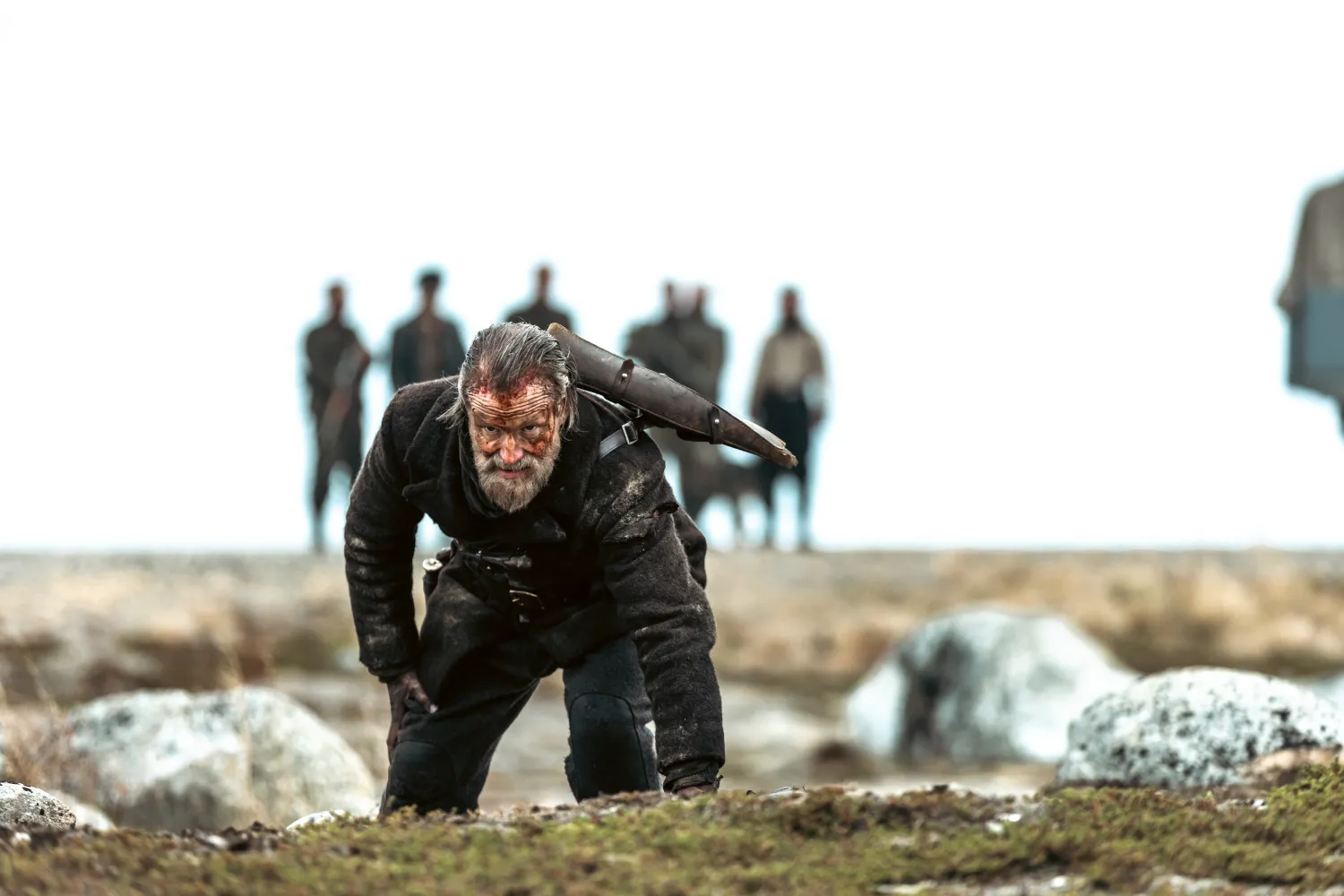Sisu: A Finnish Tale of Grit and Gold
The year is 1944. As German forces retreat from Finland, they leave a trail of scorched earth, pillaging villages along the way. Near a Lapland settlement, they encounter a silent, brooding figure named Aatami (Jorma Tommila). Armed with only a pickaxe, Aatami is prospecting for gold in the rugged terrain – and strikes a rich vein of precious ore. When the Germans attempt to seize his bounty, they quickly discover that Aatami is not to be trifled with, unleashing a brutal wave of retribution. This sets off a relentless pursuit by a special SS unit, determined to claim the gold and silence the “immortal” man.

Jorma Tommila as Aatami in “Sisu”
A Director’s Return to Form
Director Jalmari Helander makes a triumphant return to cinema after a prolonged absence. His last film, the Hollywood action flick “Big Game” starring Samuel L. Jackson, was released in 2014. His breakout hit, the dark horror-comedy “Rare Exports,” dates back even further to 2010. This hiatus has clearly been productive for Helander, as “Sisu” feels like a conscious effort to refine his craft. While “Rare Exports” suffered from a degree of excess, particularly when compared to its concise original short film, “Sisu” is lean, mean, and devoid of any unnecessary baggage.

Jack Doolan as Wolf in “Sisu”
Stripped-Down Storytelling
The protagonist remains largely silent throughout the film. The setting is essentially a single, vast, frozen Lapland field. The conflict is distilled to its essence: Aatami kills Nazis. The brisk 91-minute runtime (including credits) is dominated by action sequences, punctuated by brief exchanges between the Germans, who are baffled by the force they’ve encountered. Their bewilderment is soon dispelled by captured Finnish women, who reveal that Aatami, during the Winter War, lost his family and single-handedly slaughtered hundreds of Soviet soldiers, earning him the moniker “Koschei” – a figure from Slavic folklore known for his immortality.

Jorma Tommila as Aatami in “Sisu”
A Genre Mashup with a Finnish Twist
Helander’s film cleverly borrows elements from other action movies centered around mythical heroes. Aatami dispatches enemies with the efficiency of John Wick, thwarts the Nazis like Indiana Jones, and engages in vehicular mayhem that rivals Mad Max. However, the Finnish “Koschei” often travels on foot. He carries the weight of a traumatic past, is shrouded in legend, and his only companions are his loyal dog and horse (though not all will survive). While the film could easily have felt derivative, Helander deftly avoids cliché by focusing on pure action. Aatami’s backstory is revealed only through the conversations of other characters, eschewing flashbacks or tedious introspection. He remains a mythic force of nature until the very end. It’s easy to imagine that if the story were told from the perspective of the SS soldiers, Aatami would be a typical slasher movie monster, appearing from nowhere to dispatch his opponents in increasingly gruesome and inventive ways.
Action-Packed Spectacle
Due to its minimalist approach, the film may seem somewhat mechanical. Dialogue is kept to a minimum, and the quieter moments between action scenes serve primarily as breathers. The subplot involving the captured Finnish women feels like an attempt to inject some dramatic weight into the story, as otherwise, Aatami would simply be fighting for a bag of gold. However, “Sisu” is so relentlessly focused on action that its narrative austerity hardly matters. This is a Finnish “Fury Road”: a showcase of inventive set pieces where people are torn apart by mines and tracheas are used as makeshift snorkels. With each passing second, the film veers further from gritty action into fantastical Grand Guignol, never losing momentum. One might wonder how many action scenes can be conceived when the sole location is an empty field. The answer, it turns out, is many, if you have imagination. And if you’re willing to accept the genre’s conventions, such as the SS soldiers’ collective blindness.